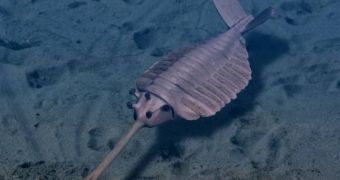Fossil records show that, between 580 and 530 million years ago, the species diversity on Earth jumped from single-celled organisms to a wide variety and complexity of life forms, hinting at what exists today as well. The rapid emergence of new and different species within 60 to 80 million years came to be known as the Cambrian explosion, and was also the time when the sulfur concentrations in the world's oceans skyrocketed. The reason why this happened has never before been satisfactorily explained, but now a new study comes to do just that.
Publishing in the May 18th issue of the scientific journal Proceedings of the National Academy of Sciences (PNAS), researchers Don Canfield, from the University of Southern Denmark, in Odense, and James Farquhar, from the University of Maryland in College Park, the US, argue that the cause of so much sulfur appearing in the oceans can be directly linked to the emergence of worms. And we're talking about the bottom-dwelling kind, which mixes, sucks, pumps and sluices the ocean floor, making sediments go up into the water – in a process now known as bioturbidity. The main classes of animals behind the onset of this process were worms, clams, small crustaceans, and other newly appeared animals at the times, which have long since gone extinct.
UK researcher Nick Butterfield, based at the University of Cambridge, said that, “The Cambrian explosion needs to be viewed as not the consequence of geochemical perturbations, but the cause of them.” The expert has not been associated with the current research. Current knowledge has it that sulphate, at the time, arrived in oceans via run-offs from rivers. Once in the water, it got processed by bottom-dwelling bacteria, which turned it into hydrogen sulphide that then got buried. As the steady churn began, the oxygen started blending with the chemicals more freely, and bacteria could recycle the pyrite deposits in the water into sulphate again, Nature News reports.
Following the research, the scientists have underlined the importance that bottom-dwelling worms had on the geochemistry of our planet. That is to say, while land animals had little to no influence on the way the Earth developed, animals inside the sea shaped the environment according to their liking, in a move that could have also influenced the formation of the atmosphere. Cloud and wind patterns could have also formed under the influence of gas mixes released or trapped by the oceans. Thus, at the forefront of terraforming the planet, worms and bacteria are to be thanked.

 14 DAY TRIAL //
14 DAY TRIAL //